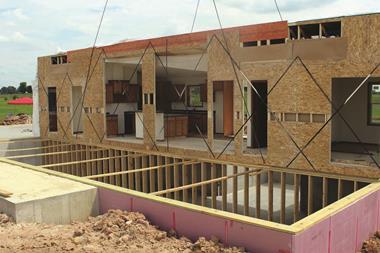As investors in social-infrastructure-related property, we spend a lot of time dealing with D1 use classes - education, healthcare and the like - and the conversion of religious and community-led buildings (also D1/D2) to such uses.

The interchange between such uses highlights not only the close links between the for-profit and not-for-profit sectors in terms of planning and use but also the distinctions in terms of how they are funded. Healthcare and education uses are generally funded either privately or through current taxes and we aim to make a profit from those users.
Religious and community uses, however, are often funded on a voluntary, charitable basis by past users for the benefit of those in the present and future. As such, you do not have to pay to go to church this Christmas. Such buildings are often a sanctuary for the calculating property investor to get away from pondering the economic relationship between the asset in which they are situated and its use - zone-A rents when being dragged out Christmas shopping, or the fair maintainable trade of a convivial and seasonally decorated pub.
The funding and management of charitable property uses run a parallel course to that of the for-profit sector. The skills to run them are no different and there are increasing instances of funding methods running together, as the spectrum of uses that are part charitable and part for-profit require private sector support in the current economic climate. This is becoming prevalent in the cases, for example, of mental health, social housing and homeless hostels.
Many wealthy individuals choose to keep their philanthropic and business interests separate, making a clear distinction between the two. There is, however, a growing trend outside the property world towards ‘for-less-profit’ models that generate some return but also deliver some social good. A good example of this is social impact bonds, which have been pioneered in healthcare and judicial social infrastructure. This might be a bond to fund reduced crime in an area; it might be guaranteed by the government but ‘interest’ is paid only in the event of the success of the project.
We are increasingly being asked to look at projects where on traditional, risk-adjusted, for-profit measures the returns may not stack up, but where social impact, not measurable in sterling, can be huge. This could be in projects where build costs are high and tenant covenants not strong enough to justify development yields, such as clinical healthcare, policing and justice - and certainly in the regeneration of poor areas.
In the latter case, many long-term investors have proven that for-profit returns can go hand in hand with social impact. Sometimes it can also make sense to make a decision for wider social impact that is also pragmatic, for example to secure planning. We have one situation at present where we have opted to seek planning for a 100% affordable/social housing development rather than private housing, as while we will receive a lower receipt on success it substantially reduces the planning risk. We and the investors in that fund also feel the positive effect of doing something to help the UK social housing crisis.
Finally, we believe that if there is capital willing to take reduced returns where there is also proven social impact, and if there are property-related projects that need such finance, then there is a natural place for property fund managers - raising, stewarding and dispersing this capital into those projects. Managers might look at this as part of their corporate responsibility; that is, not making a profit on it but allowing employees to use part of their working time and skills in a challenging and satisfying way to create that social impact.
It is an intriguing set of co-ordinates and one I believe that an increasing number of property businesses will come to embrace.
Hugo Llewelyn is managing director of Newcore Capital Management































No comments yet